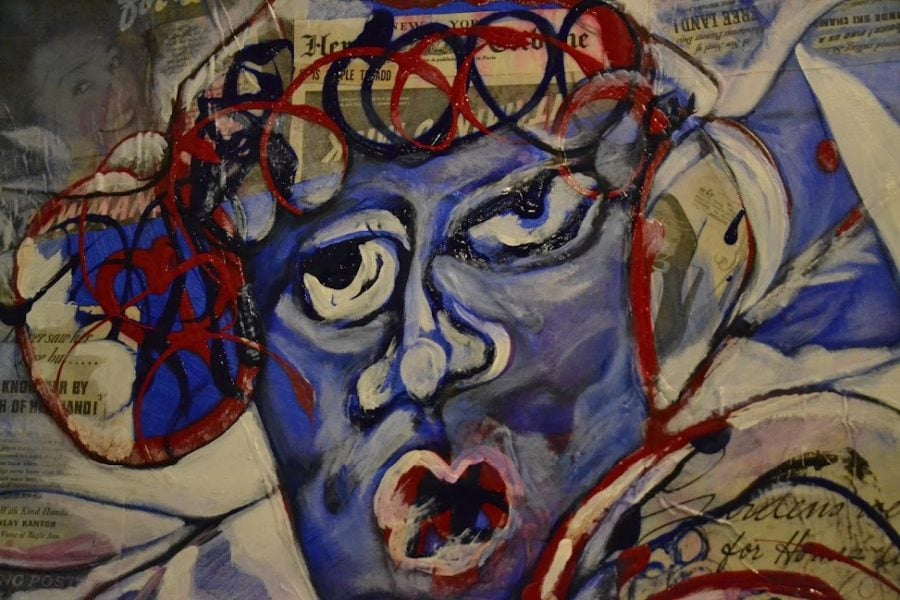Makeba Kedem-DuBose’s colorful works explore race and gender at Evanston Art Center
Jack Austin/Daily Senior Staffer
A close up of “A Girl Remembered,” featured in the “Monochrome Tone” exhibit at Evanston Art Center. The painting is an homage to disappeared women and girls.
April 28, 2022
As a young child going to church in Western Chicago, Makeba Kedem-DuBose said she looked up at the stained glass windows and asked herself, “Where are all the Black people?” Motivated by her childhood feelings of alienation, Kedem-DuBose said she aims to create colorful art depicting people of all races.
Kedem-DuBose’s latest exhibition, “Monochrome Tone,” on display at the Evanston Art Center through April, touched on topics like sexism, racism and violence through abstract paintings.
Much of the show, largely in the wall space at the Evanston Art Center’s entrance, revolves around highly colorful portraits. The pieces are filled with intricate scraps of newspaper and other materials, mixed with layers of paint.
Show curator Fran Joy said Kedem-DuBose sheds light on sex trafficking and the disappearance of Black and Indigenous women through the use of newspaper articles and portraits of disappeared people. One piece in the show, “A Girl Remembered,” honors a disappeared woman.
Kedem-DuBose was the second artist to be featured by the museum as part of its lobby gallery project, an effort to display four BIPOC artists over the course of the year.
“People were moved (at the opening). Her work draws you in,” Joy said. “Once it draws you in, then you want to know more about it, then you want to talk about it.
Caren Helene Rudman, a curator at the Art Center Highland Park, said Kedem-DuBose creates emotive, strong artworks with newspapers and paint.
Kedem-DuBose said color has long been an important element in her artworks.
“The people were not simply Black or brown,” Kedem-DuBose said. “They were multicolored, so they included everyone. I want everyone to be represented equally.”
Rudman said she was drawn to the juxtaposition of images and words in Kedem-DuBose’s exhibition. In both collage and painting, Kedem-DuBose created strong relationships between color, image and words, Rudman said.
Kedem-DuBose said she created her installations with the expectation of viewer interaction.
Connecting with community members and raising unheard voices was the primary inspiration for “Monochrome Tone,” she added.
She said Black women and girls disappear from the South Side of Chicago at record rates. The Urban Indian Health Institute found nearly 6,000 reports of missing Indigenous women and girls in 2016. Only 116 were reported in the National Missing and Unidentified Persons System database, the study found. She said by creating art on this topic, she hopes to foster greater discussion in her own community about this issue.
“They’re (these stories) not told and it’s devastating to these groups of people,” Kedem-DuBose said. “I started creating those pieces, and they are very raw and have some violent undertones, and you know, they’re about women, children, people who identify as women, all of that, and their experiences and it’s an homage to them.”
Correction: A previous version of this story incorrectly capitalized Makeba Kedem-DuBose’s name. The correct capitalization is “Makeba Kedem-DuBose,” not “Makeba Kedem-Dubose.” The Daily regrets the error.
Email: jonathanaustin2023@u.northwestern.edu
Twitter: @JackAustinNews
Related Stories:
—New Evanston Art Center exhibition inspired by cosmos, Black experience
— Evanston Made to showcase local artists in annual art exhibit



